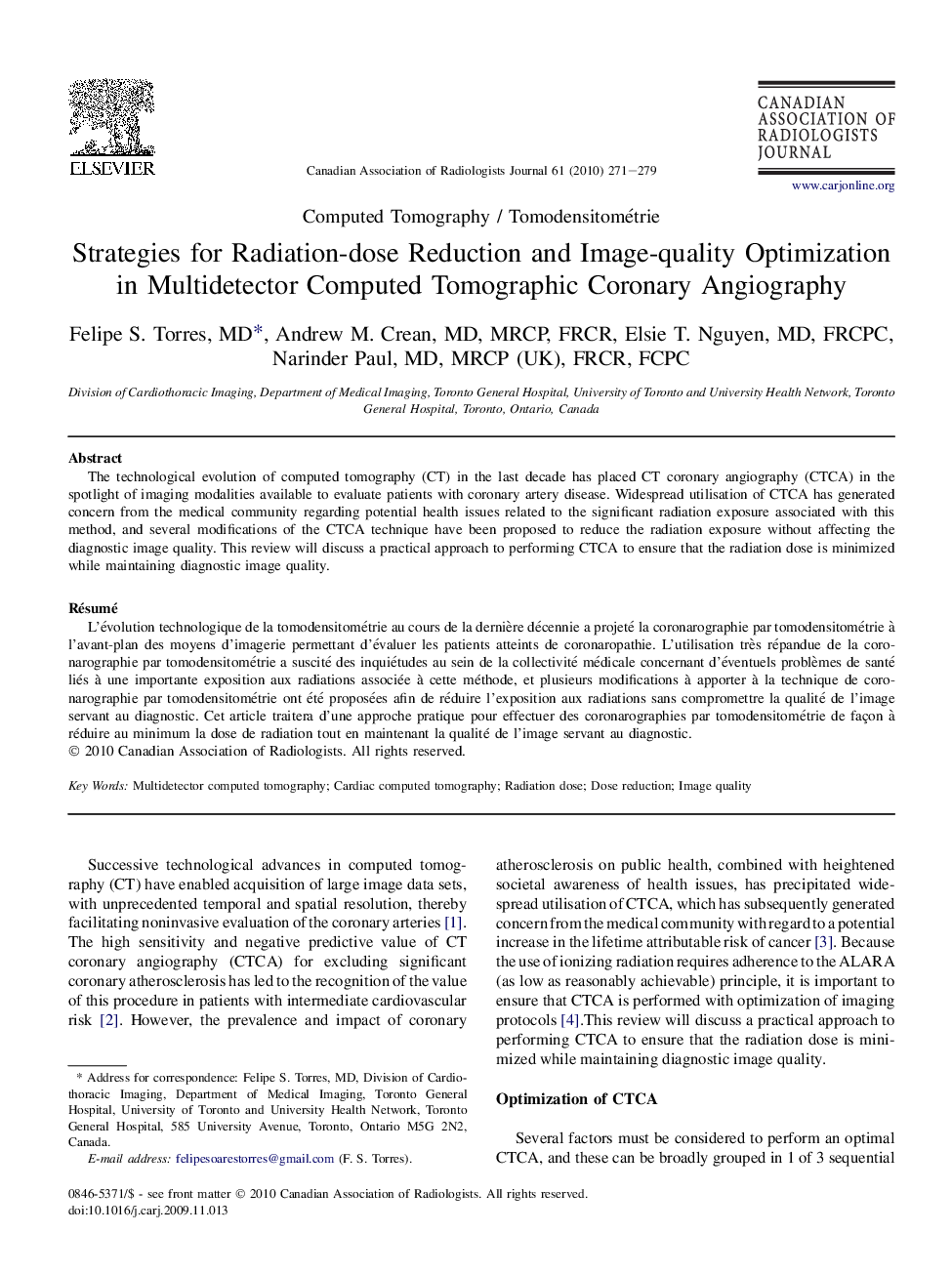| Article ID | Journal | Published Year | Pages | File Type |
|---|---|---|---|---|
| 4220699 | Canadian Association of Radiologists Journal | 2010 | 9 Pages |
The technological evolution of computed tomography (CT) in the last decade has placed CT coronary angiography (CTCA) in the spotlight of imaging modalities available to evaluate patients with coronary artery disease. Widespread utilisation of CTCA has generated concern from the medical community regarding potential health issues related to the significant radiation exposure associated with this method, and several modifications of the CTCA technique have been proposed to reduce the radiation exposure without affecting the diagnostic image quality. This review will discuss a practical approach to performing CTCA to ensure that the radiation dose is minimized while maintaining diagnostic image quality.
RésuméL'évolution technologique de la tomodensitométrie au cours de la dernière décennie a projeté la coronarographie par tomodensitométrie à l'avant-plan des moyens d'imagerie permettant d'évaluer les patients atteints de coronaropathie. L'utilisation très répandue de la coronarographie par tomodensitométrie a suscité des inquiétudes au sein de la collectivité médicale concernant d'éventuels problèmes de santé liés à une importante exposition aux radiations associée à cette méthode, et plusieurs modifications à apporter à la technique de coronarographie par tomodensitométrie ont été proposées afin de réduire l'exposition aux radiations sans compromettre la qualité de l'image servant au diagnostic. Cet article traitera d'une approche pratique pour effectuer des coronarographies par tomodensitométrie de façon à réduire au minimum la dose de radiation tout en maintenant la qualité de l'image servant au diagnostic.
